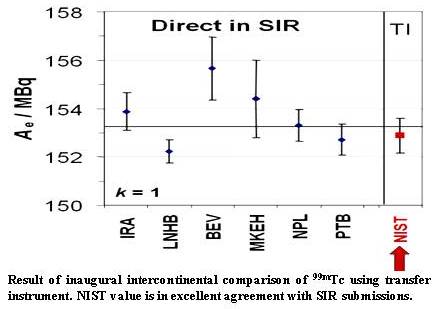| * |
|
Technetium-99m Primary Standardization and International Comparison
Summary:Technetium-99m (99mTc) is used in two-thirds of all diagnostic nuclear medicine procedures in the United States. Description:
The NIST standard was found to be in excellent agreement with the BIPM reference value, having a difference of 0.2 percent with a combined standard uncertainty of 0.4 percent. This result provides a foundation for comparative imaging and functionality studies encompassing treatment centers whose internal calibrations are based on primary standards from other countries. The radioactivity metrology community was demonstratively encouraged by the recent report of this first intercontinental comparison of 99mTc and plans to continue with comparisons in Asia and Africa.
|
Lead Organizational Unit:pml |

